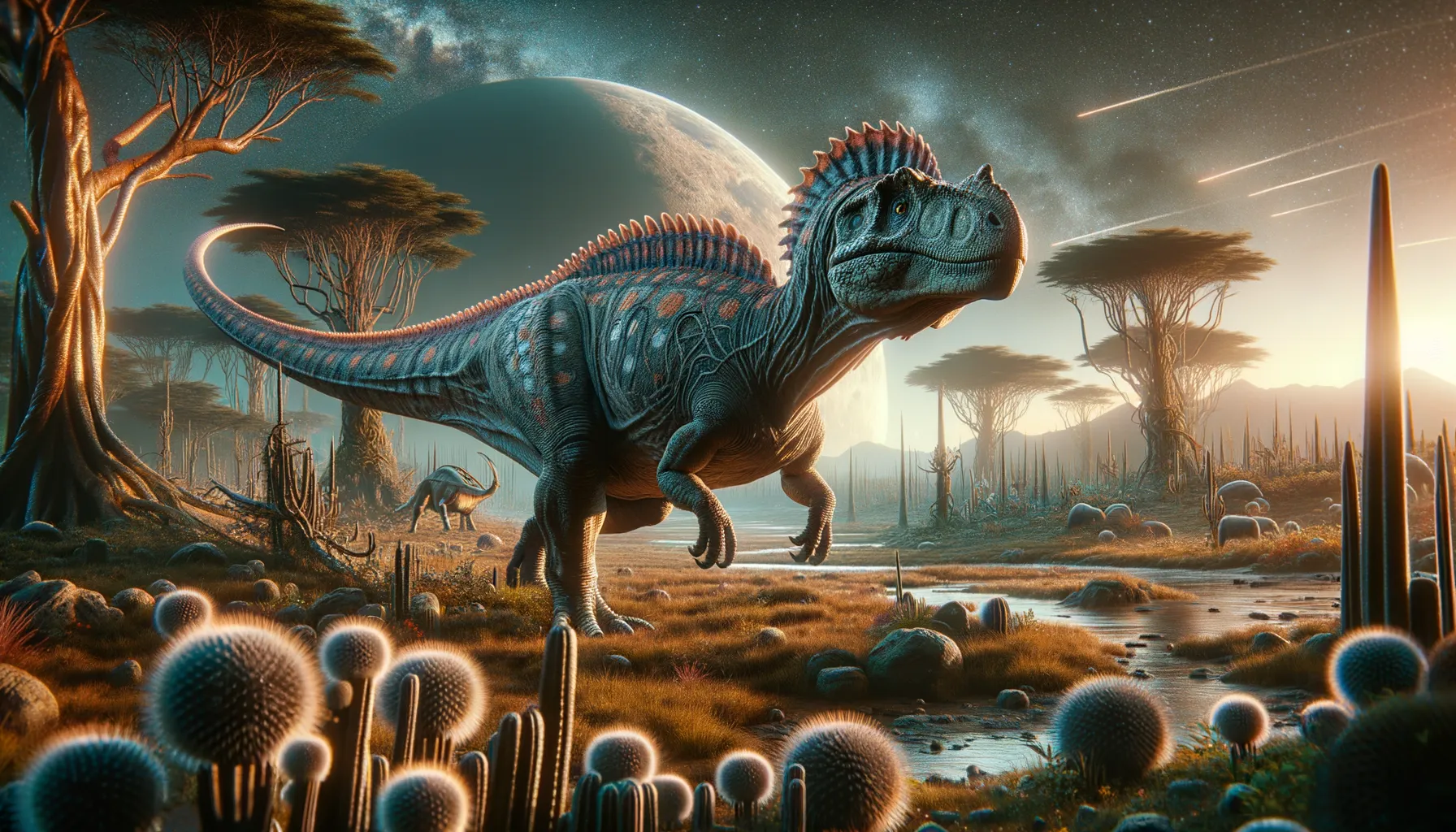
Shanxia
Armored for survival, ancient and resilient.
Period
Cretaceous
Length
Up to 6 meters long.
Height
Around 3 meters tall.
Weight
Approximately 2,500 kilograms.
Shanxia was a member of the ankylosaur family, characterized by its armored body and clubbed tail. Living during the Late Cretaceous period, it inhabited what is now modern-day China. This herbivorous dinosaur had a distinctive bony armor that helped protect it from predators. Its fossils provide insights into the diverse ecosystem of its time, illustrating the variety of life forms that existed in its habitat.
Diet
Shanxia was herbivorous, feeding primarily on low-lying vegetation. It likely consumed ferns, cycads, and other plants rich in fiber, using its specialized teeth to break down tough plant material.
Hunting
As an herbivore, Shanxia did not hunt. Instead, it foraged for food, spending much of its day grazing in its environment. Its slow speed and heavy armor suggest a strategy of defense rather than pursuit.
Environmental challenges
Shanxia faced challenges from predatory dinosaurs seeking to prey on it. The changing climate and shifting vegetation zones required adaptability in its diet. Additionally, competition for food with other herbivores shaped its survival strategies. Its significant body weight and armored structure would have required substantial energy to sustain, influencing its foraging habits.
Speed
Likely slow, due to its heavy build.
Lifespan
Estimated around 50 to 80 years.
First discovery
Found in the Ningxia Hui region, China, in 1998.
Fun Facts
- Shanxia is a dinosaur named after the Shanxi Province in China, where its fossils were discovered.
- This dinosaur lived during the Late Cretaceous period, about 72 to 66 million years ago.
- Shanxia was a type of ankylosaur, known for having armored plates covering its body.
- Unlike some other dinosaurs, Shanxia was a herbivore, feeding on plants and low-lying vegetation.
- Fossils of Shanxia were first discovered in the 1990s, providing new insights into the diversity of ankylosaurs.
- Shanxia had a characteristic club-like tail, which it likely used for defense against predators.
- Despite its heavy armor, Shanxia was likely a slow-moving dinosaur, focusing on browsing for food rather than speed.
Growth and Development
Shanxia likely grew slowly but steadily, developing stronger armor over time. As with many dinosaurs, juveniles were vulnerable to predation until they reached a size that afforded better protection. The growth of its bony plates likely played a crucial role in reaching maturity, both as a defense and as a status indicator.
Habitat
Its habitat was dominated by lush vegetation, offering ample food resources. Shanxia's environment was likely a mix of forests and open plains, providing shelter and foraging grounds. The presence of rivers and floodplains would have supported diverse plant life around it.
Interaction with other species
Shanxia likely coexisted with various herbivorous and carnivorous dinosaurs. Its armored exterior deterred most predators, promoting a largely solitary lifestyle. However, interactions with other herbivores could have involved competition for resources, especially during scarce times.
Natural lifespan
Shanxia's natural lifespan was likely influenced by both environmental factors and its ability to find food.
Reproduction
Reproduction likely involved laying eggs, with nests possibly positioned in communal areas for increased safety. Parental care might have been minimal, although some initial protection until the young hatched is conceivable. The survival of offspring depended heavily on thick vegetation for cover and their rapid growth.
Social behaviour
Shanxia may have been somewhat solitary or moved in small groups for feeding. Its strong armament means it relied more on its defenses than social cooperation for survival. During mating seasons, it may have engaged in display behaviors to attract mates.
Fossil locations
Fossils of Shanxia were discovered in the Ningxia Hui Autonomous Region, China. This location provides a wealth of paleontological data that highlights the diversity of dinosaurs in the Asian continent during the Late Cretaceous. Its discovery site continues to be of interest for further fossil excavations.
